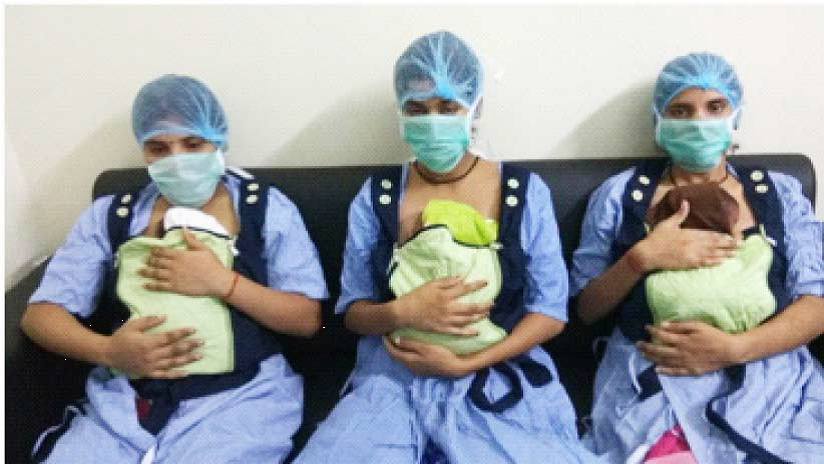Using Multipronged Strategy for improving the child health services
Using Multipronged Strategy for improving the child health services
Problem Statement
Haryana state is focusing on improving the child health services to reduce the Infant Mortality. Infant Mortality Rate (IMR) has dropped from 61 in Haryana (SRS 2005) to 44 as per SRS 2011 and further to 30 as per SRS 2017. The greatest risk of childhood death occurs during the neonatal period, which extends from birth through the first month of life. The NMR has reduced from 33 in 2010 to 21 in 2017. Further significant gains in NMR reduction will be possible on addressing the LBW and their management. Haryana established the network of SNCUs in the district hospitals starting in 2010.
Programme Description
 The multipronged strategy for addressing Low Birth Weight babies includes:
The multipronged strategy for addressing Low Birth Weight babies includes:
- Identification of hidden low birth weight babies – The state supported the districts to replace all conventional manual weighing scales with digital weighing scales in all Newborn care corners.
- Improving access to care of small and sick newborns by increasing the number of SNCUs – Haryana has 23 SNCUs, 22 of them located in district hospitals and remaining 1 in SDH. The state has planned to upgrade 5 NBSUs to SNCUs.
- Kangaroo Mother Care Units in all SNCUs – All SNCUs have a functional KMC unit with trained staff.
- Family Participatory Care – The state along with VRIDDHI/USAID organized 4 Regional trainings. SNCUs were provided with printed posters and recording and reporting registers to facilitate the implementation.
Programme Outcomes
In government institutions the reporting of LBW increased from 10% to 18% in 2018-19. In Aspirational district Mewat, the institutional delivery increased from 64% to 69% in 2018-19, reported low birth weight babies increased from 3% to 14% in the same period.
The total SNCU admissions increased by 5% from 23206 in 2017-18 to 24402 in 2018-19. The percentage of LBW admissions increased between the two years from 11627 LBW admissions in 2017-18 to 12314 LBW admissions in 2018-19. This included increase in admission of babies with birth weight <1800 gms from 13.2% to 14.8%.
The percentage of admitted babies receiving KMC was increased from 16% in 2017-18 to 18% in 2018-19. This was further strengthened by the implementation of Family Participatory Care (FPC) which facilitates involvement of parents for routine care, developmental supportive care, KMC and optimal feeding and care of newborn at home with identification of danger signs. NHM Haryana has conducted total of 4 state level ToTs from March – August 2019. In these trainings total of 104 participants were trained which includes 16 paediatricians, 14 MOs, 71 staff nurses, and 4 others. These participants were from 23 SNCUs and 6 NBSUs from 21/22 districts of Haryana. All three NBSUs and single SNCU of aspirational district Mewat trained in the FPC. Facilities have started reporting and till August 2019 total of 1892 FPC sessions were held in different SNCUs and about parents of 3000 admitted newborns have attended these sessions including 1225 low birth weight babies. Nearly 60% of parents of admitted newborns attended at least one session of FPC in the last three months from the reporting facilities.
Financial Implications
None of the interventions had any significant cost requiring special funding.
Scalability
Haryana has implemented these interventions at scale across all districts. The model depicts the feasibility of improving detection of LBW and improving preparedness of the health system to cater to LBW babies.
Source : We Care Coffee Table Book - Good, Replicable and Innovative Practices 2019
Last Modified : 6/10/2021
Provides information about clean drinking water av...
This topic provides information about Organic Valu...
This topic provides information about Block Task F...
This topic provides information about Ashraya - Pa...
